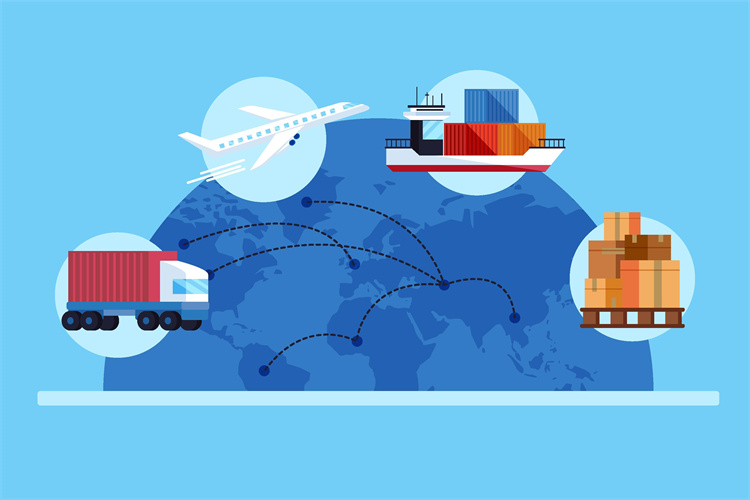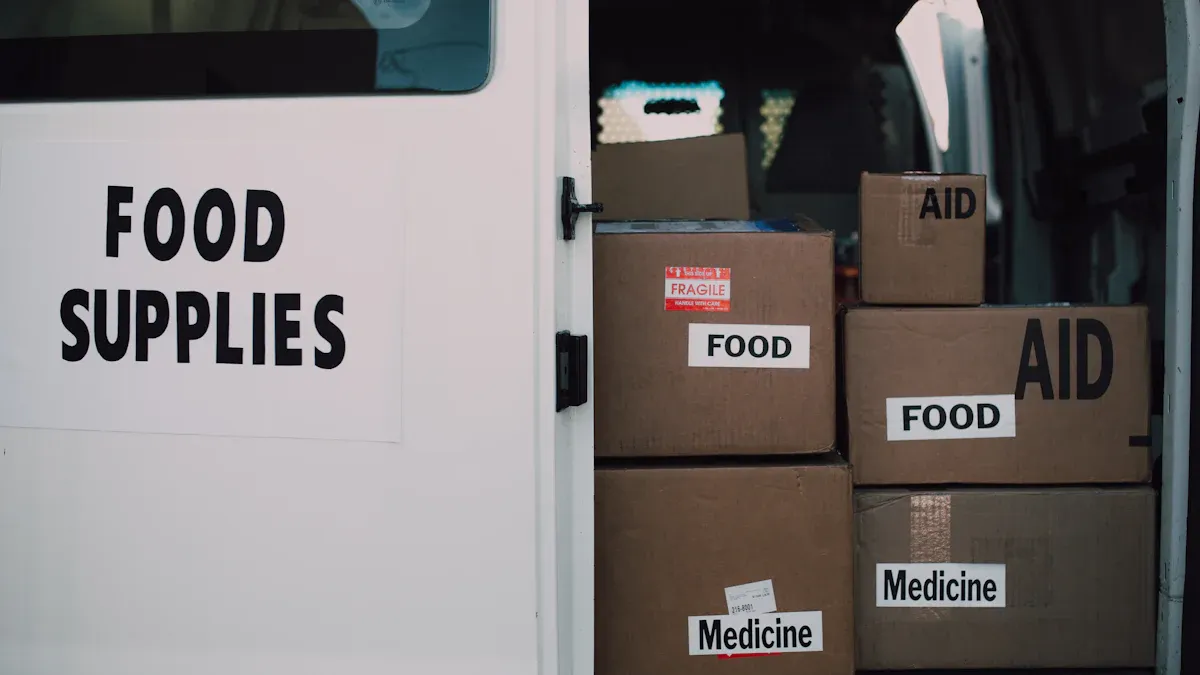Market Analysis of Last Mile Delivery in North America 2025
The Last-Mile Delivery in North America market plays a pivotal role in shaping the logistics landscape of the region. Its influence extends beyond operational efficiency, directly impacting consumer satisfaction and business profitability. Companies are leveraging advanced technologies like AI and big data analytics to optimize delivery routes and meet growing consumer demands for faster services. The B2C segment, in particular, faces unique challenges, such as delivering individual packages to diverse household locations. To address these, businesses have introduced innovative solutions like same-day and next-day deliveries, which have significantly enhanced customer experiences.
Metric | Value |
|---|---|
Projected Growth (2025-2029) | |
CAGR | 3.8% |
Influencing Factor | Growing B2C e-commerce |

The analysis of the Last-Mile Delivery in North America market reveals its critical role in driving economic growth and adapting to evolving consumer expectations.
Market Size and Forecast for Last-Mile Delivery in North America
Current Market Size and Growth Rate
The last mile delivery market in North America has experienced remarkable growth in recent years. As of 2023, the market size reached USD 43,835.0 million, driven by the rapid expansion of e-commerce and evolving consumer expectations. The annual growth rate varies across sources, with Grand View Research projecting a compound annual growth rate (CAGR) of 7.2%, while The Insight Partners estimates an even higher CAGR of 8.3%. These figures highlight the robust growth dynamics of the market, fueled by technological advancements and the increasing demand for efficient delivery services.

Source | Projected CAGR | Revenue by 2030 |
|---|---|---|
Grand View Research | 7.2% | US$ 71,288.0 million |
The Insight Partners | 8.3% | US$ 75.13 billion |
Key Projections for 2025
The forecast for the last mile delivery market in North America indicates continued expansion. By 2025, the market is expected to surpass USD 50 billion, reflecting the growing reliance on last mile logistics to meet consumer demands. Companies are investing heavily in innovative technologies such as autonomous vehicles and drones to streamline the delivery process. These advancements aim to reduce delivery times and enhance customer satisfaction. The increasing adoption of real-time tracking systems and data analytics further strengthens the market's growth forecast, ensuring efficient and transparent delivery operations.
Major Market Segments and Their Contributions
The North America last mile delivery market is segmented into B2B and B2C categories, with the latter dominating due to the surge in e-commerce activities. The B2C segment has grown significantly as consumers demand faster delivery options like same-day and next-day services. Companies leverage big data and analytics to optimize delivery routes, improving efficiency and customer experience. Real-time shipment tracking and package updates have become standard features, enhancing transparency in the delivery process. Major players, including Amazon and DHL, continue to innovate with technologies like electric vans and drones, further shaping the market dynamics.
Key Contributors:
The B2C segment leads due to rising consumer expectations.
Innovations like next-day delivery and real-time tracking drive growth.
Companies utilize big data to enhance operational efficiency.
Regional and Segmental Analysis of the North America Last Mile Delivery Market
Regional Breakdown: U.S., Canada, and Mexico
The North America last mile delivery market exhibits distinct trends across the U.S., Canada, and Mexico. The U.S. leads the region, accounting for 26.4% of the global market in 2023. Its dominance stems from a robust e-commerce sector and the presence of major logistics players. By 2030, the U.S. market revenue is projected to reach $62,419.8 million, driven by the rapid growth of B2C, B2B, and C2C delivery segments.
In Mexico, the rise of e-commerce is reshaping consumer behavior. Clothing and apparel dominate online purchases, while companies like Mercado Libre and Amazon invest heavily in distribution networks and warehousing. The agricultural trade sector also fuels demand for specialized last-mile delivery services, particularly for perishable goods. Advanced technologies, such as real-time tracking, are enhancing operational efficiency in the region.
Canada, while smaller in scale, focuses on sustainability and innovation. The adoption of electric vehicles and localized delivery hubs reflects its commitment to reducing environmental impact. These regional differences highlight the diverse dynamics shaping the market across North America.
Market Segmentation by Delivery Type (B2B, B2C)
The market's segmentation into B2C and B2B delivery types reveals unique contributions and challenges. The B2C segment has experienced significant growth due to rising consumer demand for faster delivery options. Operators have introduced same-day and next-day delivery services to meet these expectations. Real-time tracking and updates further enhance the consumer experience, making B2C deliveries a dominant force in the market.
In contrast, B2B deliveries focus on bulk shipments to businesses, offering predictable schedules and streamlined logistics. While B2B operations benefit from centralized delivery points, B2C faces the challenge of delivering individual packages to diverse household locations. This segmentation underscores the importance of tailored strategies to address the distinct needs of each segment.
Vehicle Type Analysis: Electric Vehicles, Drones, and Traditional Vehicles
Electric vehicles (EVs) are transforming the last mile delivery landscape in North America. Their adoption reflects a growing emphasis on sustainability and compliance with environmental regulations. EVs reduce carbon emissions and operational costs, making them a preferred choice for eco-conscious logistics providers.
Drones are also gaining traction, particularly in the U.S., where over ten operators completed more than 5,000 commercial deliveries in 2022. The number of packages delivered by drones increased by over 80% from 2021 to 2022, showcasing their potential to revolutionize last-mile logistics. These unmanned aerial systems offer faster delivery times and access to remote areas, enhancing efficiency.
Traditional vehicles remain integral to the market, especially for bulk deliveries and long-distance routes. However, the shift toward greener alternatives and advanced technologies signals a transformative phase for the industry.
End-User Categories: Retail, Healthcare, Food Delivery, and Others
The north america last mile delivery market serves diverse end-user categories, each contributing significantly to its growth and evolution. These categories include retail, healthcare, food delivery, and others, each with unique demands and opportunities.
Retail
Retail remains a cornerstone of the market, driven by the rapid expansion of e-commerce. The B2C and B2B segments both play vital roles in this sector. B2C deliveries dominate due to the increasing consumer preference for online shopping and the demand for faster delivery options. Retailers rely on advanced logistics solutions to meet these expectations, ensuring timely and efficient deliveries. The integration of real-time tracking and route optimization has further enhanced the delivery experience, solidifying retail's position as a key driver of the market.
Healthcare
The healthcare sector has emerged as a critical player in the last mile delivery landscape. The need for timely and secure transportation of medical supplies, pharmaceuticals, and equipment has fueled demand for specialized logistics solutions. Companies prioritize precision and reliability to ensure the safe delivery of sensitive items. The adoption of temperature-controlled vehicles and real-time monitoring systems has become standard practice, addressing the unique challenges of this sector.
Food Delivery
The food and beverages segment is experiencing remarkable growth, with a projected CAGR of 11.0% during the forecast period. This expansion stems from the rising popularity of food delivery services and the need for efficient transport of perishable goods. Changing consumer preferences, such as the demand for fresh and ready-to-eat meals, have further accelerated this trend. Businesses in this category leverage hyperlocal delivery networks and micro-fulfillment centers to ensure speed and quality, making food delivery a significant contributor to the market.
Other Sectors
Other sectors, including manufacturing and heavy equipment, also contribute to the north america last mile delivery market. These industries require tailored logistics solutions to handle bulk shipments and specialized goods. The integration of advanced technologies, such as autonomous vehicles and blockchain, has enhanced efficiency and transparency across these diverse categories.
The analysis of these end-user categories highlights their collective impact on the market's growth. Each sector's unique requirements drive innovation and shape the future of last mile logistics in North America.
Competitive Landscape in the Last Mile Delivery Market
Key Players and Their Strategies
The north america last mile delivery market is highly competitive, with key players employing diverse strategies to maintain their market positions. Companies like United Parcel Service Inc., Amazon.com Inc., and FedEx Corp lead the industry by leveraging innovative approaches to enhance their services.
United Parcel Service Inc. focuses on mergers and acquisitions to expand its capabilities and improve product offerings.
Amazon.com Inc. emphasizes sustainability by deploying electric vehicles and offering next-day delivery options to meet consumer demands.
FedEx Corp integrates advanced technologies to enhance service efficiency and reliability.
These strategies enable logistics service providers to adapt to the evolving needs of the market while maintaining a competitive edge.
Key Players | Strategies |
|---|---|
United Parcel Service Inc. | Mergers and acquisitions, product enhancements |
Amazon.com Inc. | Deployment of electric vehicles, next-day delivery options |
FedEx Corp | Service enhancements through technology integration |
Innovations by Leading Companies
Leading companies in the north america last mile delivery market continue to innovate, introducing cutting-edge technologies to streamline operations and improve customer satisfaction.
Innovation Type | Description |
|---|---|
Artificial Intelligence | Optimizes routes, predicts demand, and boosts operational efficiency through data analysis. |
Internet of Things (IoT) | Provides real-time visibility into deliveries and monitors package conditions. |
Autonomous Vehicles | Operate 24/7 without human drivers, reducing delivery times and costs. |
Drones | Offer quick delivery in remote areas, avoiding traffic and minimizing environmental impact. |
Robotics | Handle sorting, loading, and delivery tasks, improving efficiency and accuracy. |
Sustainable Practices | Utilize electric vehicles and optimized routes to lower carbon emissions and operational costs. |
These innovations reflect the industry's commitment to leveraging technology to address challenges and meet consumer expectations. Autonomous vehicles and drones, in particular, have revolutionized delivery processes, offering faster and more efficient solutions.
Recent Mergers, Acquisitions, and Partnerships
Collaborations and acquisitions play a pivotal role in shaping the north america last mile delivery market. Companies form strategic alliances to enhance their capabilities and explore new opportunities.
Date | Companies | Description |
|---|---|---|
June 2021 | Announced a multi-year partnership to test Nuro's autonomous delivery vehicle within FedEx operations. | |
April 2021 | FedEx and Nuro | Initiated a test run in Houston, marking Nuro's entry into package logistics. |
Ongoing | FedEx | Exploring multiple use cases for autonomous vehicle logistics, including multi-stop and appointment-based deliveries. |
These partnerships highlight the industry's focus on integrating advanced technologies like autonomous vehicles to improve operational efficiency. FedEx's collaboration with Nuro exemplifies how companies are investing in innovation to redefine last-mile delivery.
Emerging Startups and Disruptors
Startups and disruptors are reshaping the north america last mile delivery landscape with innovative solutions and agile business models. These emerging players challenge traditional logistics providers by addressing inefficiencies and introducing cutting-edge technologies. Their contributions are pivotal in meeting the growing demands of the e-commerce-driven market.
One notable trend among startups is the adoption of hyperlocal delivery networks. Companies like Gopuff and Gorillas focus on delivering goods within minutes by leveraging strategically located micro-fulfillment centers. This approach reduces delivery times and enhances customer satisfaction. These startups cater to urban consumers who prioritize speed and convenience, making them key players in the evolving market.
Another area of disruption involves autonomous delivery technologies. Startups such as Starship Technologies and Nuro are pioneering the use of robots and self-driving vehicles for last-mile deliveries. These innovations not only reduce operational costs but also address labor shortages in the logistics industry. Their deployment in urban areas demonstrates the potential for scalable and sustainable delivery solutions.
Sustainability is another focus for disruptors in the north america last mile delivery market. Companies like BrightDrop and Arrival are developing electric delivery vehicles tailored for urban logistics. These startups align with the market's shift toward eco-friendly practices, offering solutions that reduce carbon emissions and operational costs.
The analysis of these disruptors highlights their role in driving innovation and efficiency. Their ability to adapt quickly to market demands positions them as essential contributors to the north america last mile delivery ecosystem. As they continue to grow, these startups will likely influence the broader logistics industry, setting new benchmarks for service and sustainability.
JUSDA's Role in the North America Last Mile Delivery Market
JUSDA in North America: Strategic Logistics Solutions
JUSDA has established itself as a pivotal player in the north america last mile delivery market by offering tailored logistics solutions that address the region's unique challenges. Its strategic focus on the U.S. and Mexico capitalizes on nearshoring trends and the resurgence of manufacturing in Mexico. By leveraging an extensive carrier network, JUSDA ensures seamless cross-border transport, particularly for industries requiring specialized handling, such as electronics and automotive.
The company’s emphasis on risk management sets it apart. JUSDA adheres to stringent safety regulations for hazardous materials, including lithium batteries, ensuring compliance and reliability. Its quote management system enhances transparency, enabling businesses to make informed decisions. These features position JUSDA as a trusted partner for companies navigating the complexities of the north america last mile delivery landscape.
Leveraging JusLink for Real-Time Supply Chain Collaboration
JUSDA’s JusLink platform revolutionizes supply chain collaboration by integrating IoT, cloud computing, and big data. This intelligent system provides real-time visibility across the supply chain, enabling businesses to track shipments, optimize routes, and predict delivery times with precision.
Note: Real-time tracking reduces delays and enhances customer satisfaction, a critical factor in the competitive last mile delivery market.
JusLink also facilitates seamless communication between suppliers, carriers, and customers. Its predictive analytics capabilities allow businesses to anticipate demand surges and allocate resources efficiently. This innovation underscores JUSDA’s commitment to enhancing operational efficiency and transparency.
Industry-Specific Solutions for Electronics, Automotive, and Healthcare
JUSDA delivers specialized solutions tailored to the needs of key industries.
Electronics: The company ensures the safe transport of sensitive components, leveraging temperature-controlled vehicles and advanced tracking systems.
Automotive: JUSDA supports just-in-time delivery models, critical for automotive manufacturing, by optimizing supply chain operations.
Healthcare: The company prioritizes precision and reliability, offering temperature-controlled logistics for pharmaceuticals and medical devices.
These industry-specific solutions highlight JUSDA’s adaptability and expertise in addressing diverse market demands.
Enhancing Cross-Border Logistics Between the U.S. and Mexico
Cross-border logistics between the U.S. and Mexico plays a vital role in the north america last mile delivery market. The region's growing reliance on nearshoring has amplified the need for efficient and reliable logistics solutions. JUSDA addresses these demands by offering tailored services that streamline operations and enhance supply chain efficiency.
JUSDA's strategic focus on the U.S.-Mexico corridor capitalizes on the resurgence of manufacturing in Mexico. The company provides seamless cross-border transport through an extensive carrier network. This approach ensures timely deliveries while minimizing disruptions caused by customs delays or regulatory challenges. By integrating advanced technologies, JUSDA enhances transparency and operational efficiency. Its JusLink platform enables real-time tracking, allowing businesses to monitor shipments and optimize delivery routes.

JUSDA Solutions
To provide you with professional solutions and quotations.
Risk management remains a cornerstone of JUSDA's cross-border logistics solutions. The company adheres to strict safety regulations, particularly for hazardous materials like lithium batteries. This commitment ensures compliance with international standards and fosters trust among stakeholders. Additionally, JUSDA simplifies the quoting and booking process for businesses, enhancing transparency and reducing administrative burdens.
The north america last mile delivery market benefits significantly from JUSDA's innovative practices. The company's emphasis on localized solutions, such as expanding services along the U.S. East Coast and the U.S.-Mexico border, aligns with the region's unique logistics needs. These efforts not only improve delivery efficiency but also support the broader market's growth.
Note: The analysis of cross-border logistics highlights its critical role in shaping the future of the north america last mile delivery market. Companies like JUSDA set benchmarks for innovation and reliability, ensuring businesses remain competitive in an evolving landscape.
The north america last mile delivery market demonstrates immense growth potential, driven by advancements in technology, sustainability initiatives, and the expansion of e-commerce. Key trends, such as the adoption of electric vehicles and real-time tracking, continue to reshape the market landscape. However, businesses face significant challenges that require strategic solutions.
High costs, accounting for over 50% of total shipping expenses, remain a critical concern.
Urban congestion and limited parking spaces complicate delivery logistics.
Environmental concerns and rural delivery inefficiencies further add to operational complexities.
To stay competitive, businesses must embrace innovation and adapt to evolving customer expectations.
Implementing AI and machine learning can optimize delivery routes and enhance customer experiences.
Investing in eco-friendly solutions, such as electric vehicles, appeals to environmentally conscious consumers.
Offering real-time tracking and flexible delivery options aligns with modern consumer demands.
By addressing these challenges and leveraging actionable insights, businesses can unlock opportunities and thrive in the evolving last mile delivery market.
See Also
Five Leading Logistics Programs to Watch in 2024
Exploring the Future of LTL Freight in Detail
Transforming Logistics with AI: The Future Ahead
